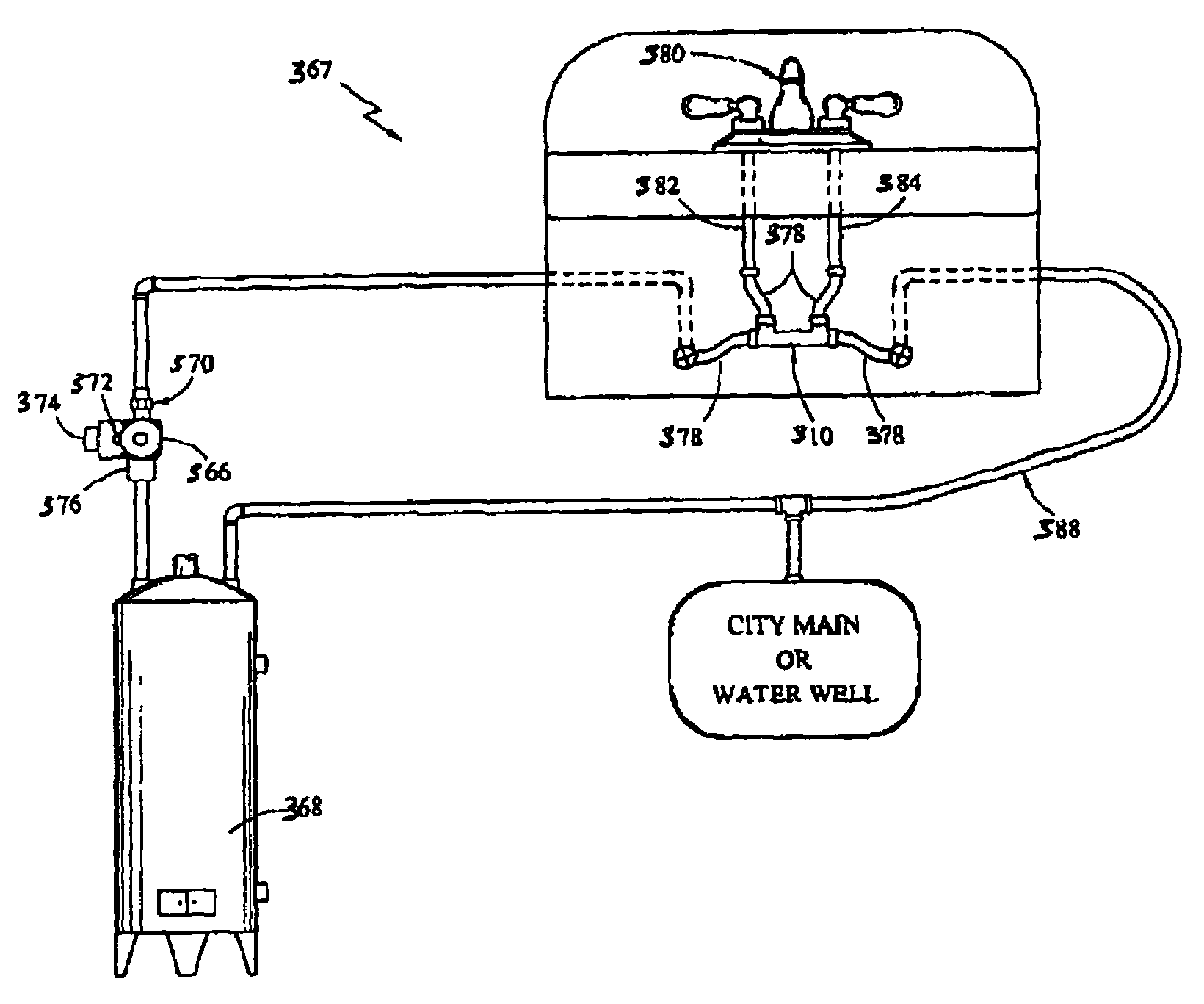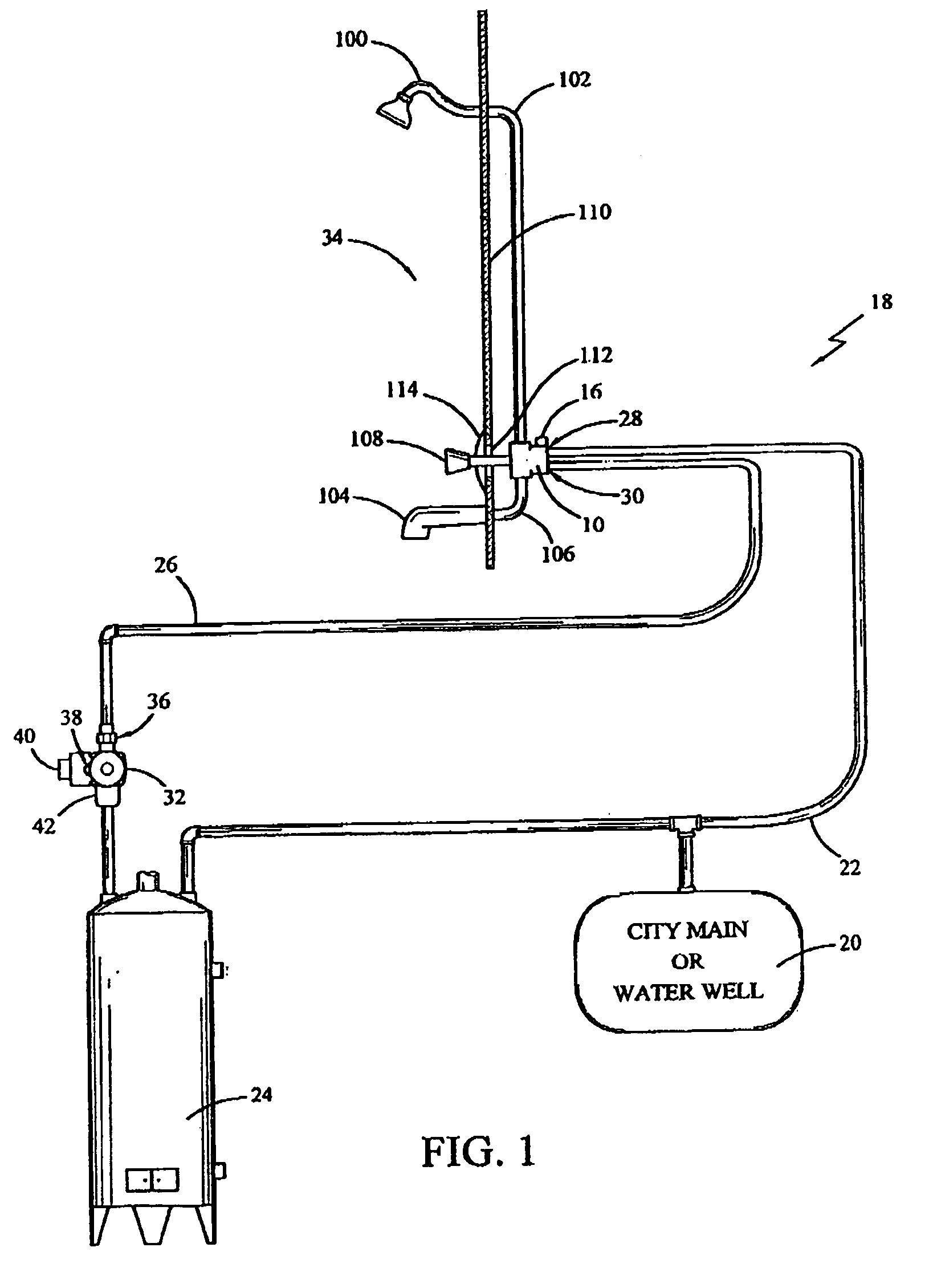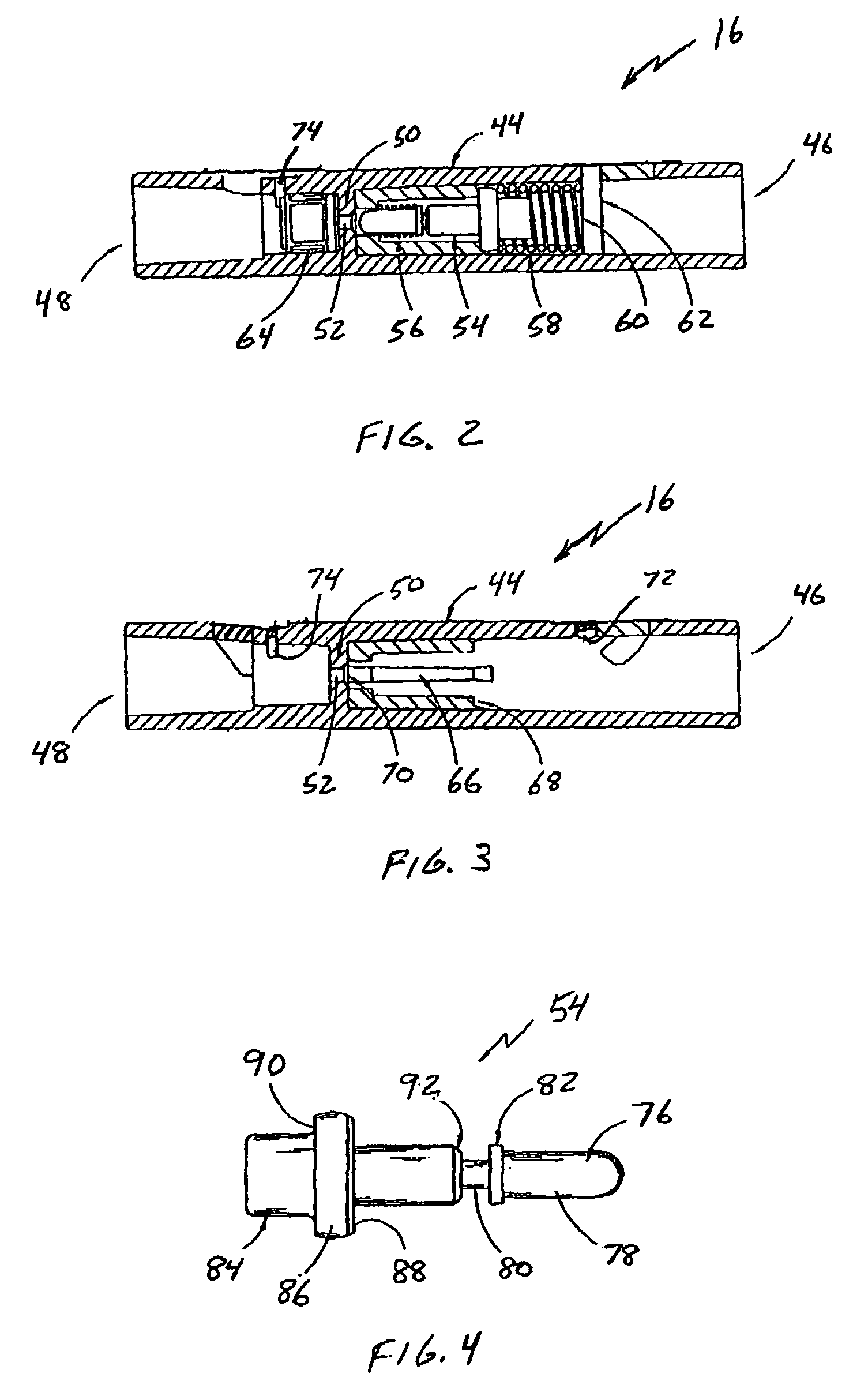Water pump and thermostatically controlled bypass valve
a technology of thermostatic control and bypass valve, which is applied in the direction of process and machine control, lighting and heating apparatus, instruments, etc., can solve the problems of no method of “draining”, no hot water readily available at the hot water side of the fixture, and no way of bypassing the cold or tepid water. achieve the effect of convenient bypassing of cold or tepid water
- Summary
- Abstract
- Description
- Claims
- Application Information
AI Technical Summary
Benefits of technology
Problems solved by technology
Method used
Image
Examples
example 1
[0073]Shower / Tub Control Valve with Attached Bypass Valve
[0074]As is well known, many homes have a combination shower and tub assembly whereby the same water control valve 10 is used to control the flow and temperature to the shower and the tub. A selector valve (not shown) is used to select the flow between the shower and the tub. An example shower / tub system is shown as 34 in FIG. 1. A similar water control valve to that shown as 10, is used for systems comprising only a shower or a tub, with the exception that such valve only has one discharge port (connected to either the shower or the tub). In the shower / tub system 34, water distribution valve 10 with associated bypass valve assembly 98, having bypass valve 16 as described below, distributes water to the shower head assembly 100 through shower line 102 and to tub faucet 104 through tub line 106, as shown in FIG. 1. A flow control valve 108 is used to control the flow and temperature of water to the shower head assembly 100 or t...
example 2
[0087]Shower / Tub Control Valve with Adjacent Bypass Valve
[0088]In the embodiment of the present invention where bypass valve 16 is adjacent to (i.e., but not physically attached to or supported by) water control valve 10, shown in FIGS. 12 and 13, bypass valve 16 is directly supported by first tubular line 156 and second tubular line 158. FIG. 12 illustrates a configuration similar to that shown in FIG. 10 and discussed above except for there is no connecting element 160 or attachment mechanism 162 to affix bypass valve 16 to valve manifold 118. Likewise, FIG. 13 illustrates a configuration similar to that shown in FIG. 11 and discussed above except there is no connecting element 160 or attachment mechanism 162 for affixing bypass valve 16 to valve manifold 118. Depending on the flexibility of first tubular line 156 and second tubular line 158, bypass valve 16 hangs freely from their connection to ports 138 and 140 on water control valve 10 or from first 164 and second 166 bypass co...
example 3
[0090]Service Control Valve
[0091]In the embodiment wherein bypass valve 16 is included with the water control valve, shown as water control valves 12 and 14 in FIGS. 14 through 17, bypass valve 16 is integrated with or appended to a pair of individual water control valves 12, also known as angle stops, or incorporated with a combination water control valve 14. These types of valves are commonly referred to as service valves or non-working valves because they are not operated so as to be frequently moved from the opened to closed positions. Service valves are primarily utilized to connect to washing machines, sinks or faucets on sinks, dishwashing machines and the like apparatuses. Normally, service valves are left in the open position, only being closed to repair or replace the apparatus. In the open position, water is allowed to flow freely to the apparatus, with the apparatus itself having a control valve such as an electrically controlled solenoid valve incorporated therein to co...
PUM
 Login to View More
Login to View More Abstract
Description
Claims
Application Information
 Login to View More
Login to View More - R&D
- Intellectual Property
- Life Sciences
- Materials
- Tech Scout
- Unparalleled Data Quality
- Higher Quality Content
- 60% Fewer Hallucinations
Browse by: Latest US Patents, China's latest patents, Technical Efficacy Thesaurus, Application Domain, Technology Topic, Popular Technical Reports.
© 2025 PatSnap. All rights reserved.Legal|Privacy policy|Modern Slavery Act Transparency Statement|Sitemap|About US| Contact US: help@patsnap.com



